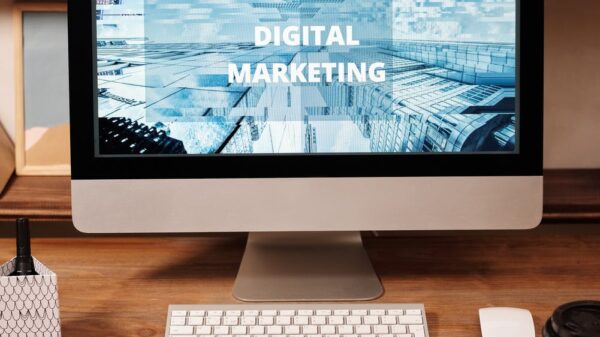Change is inevitable. It’s a fact of life that we must deal with in every aspect of our lives, including business. In today’s fast-paced and ever-evolving world, it’s not enough to simply adapt to change; businesses must embrace innovation and disruption if they want to stay ahead of the curve. From new technologies and shifting consumer behavior to emerging markets and global competition, there are countless factors driving change in modern business. But how can companies effectively navigate this landscape of constant transformation? In this blog post, we’ll explore the importance of embracing change as a critical component of success in business today – from fostering a culture of innovation to leveraging disruptive technologies for competitive advantage. So buckle up and get ready for an exciting ride into the world of innovation and disruption!
What is Innovation and Disruption?
Innovation is the creation of new value or the capturing of value in a new way. Disruption is a process or an event that causes a significant change in an industry, market, or company. Many businesses embrace innovation and disruption as a way to stay ahead of the competition and maintain a competitive edge.
Innovation can be defined as the process of introducing something new into the market or workplace. This could be a new product, service, technology, or even a new business model. Disruption, on the other hand, is about upending the status quo. It’s about shaking things up and challenging the status quo.
While innovation is often incremental and gradual, disruption tends to be more sudden and dramatic. It can be disruptive to an industry, market, or company. But it can also be disruptive to society as a whole.
Some of the most famous examples of disruption include Uber and Airbnb. These companies disrupted traditional taxi and hotel businesses by offering innovative new services that were much easier to use and more convenient for consumers. As a result, they quickly captured a large share of the market.
Many businesses are now looking for ways to embrace innovation and disruption. They understand that these forces can lead to new opportunities for growth and profitability. But they also know that they need to be prepared for disruptions that could upend their business models completely.
The Benefits of Embracing Change in Business
When it comes to business, change is inevitable. In order to stay ahead of the competition and keep your business relevant, it’s important to embrace change. Here are some benefits of embracing change in business:
1. It keeps you on your toes.
If you’re constantly embracing change, it means you’re always learning and growing. This keeps you sharp and gives you a competitive edge.
2. It helps you stay relevant.
Change is a necessary part of innovation. If you want your business to stay relevant, you need to be open to change. Otherwise, your competition will leave you in the dust.
3. It allows you to be flexible.
Being flexible and adaptable is key in business. The ability to pivot when necessary can mean the difference between success and failure.
4. It builds character.
How to Prepare Your Business for Innovation and Disruption
If your business isn’t prepared for innovation and disruption, you could be at a serious disadvantage. Here are some tips to help you get ready for the changes that are sure to come:
1. Understand the landscape. Keep up with trends in your industry and understand the drivers of change. What technologies are emerging that could disrupt your business? What are your customers demanding that you don’t currently offer?
2. Foster a culture of innovation. Encourage creativity and risk-taking within your organization. Make it easy for employees to experiment and fail.
3. Invest in research and development. You can’t innovate if you’re not investing in the future. Make sure you have a budget for new ideas and new technologies.
4. Be agile. Don’t wait for things to happen, make them happen. Be responsive to changes in your industry and adapt quickly to stay ahead of the competition.
5. Embrace change. Change is inevitable, so embrace it instead of resisting it. Be open to new ideas and new ways of doing things.
Strategies for Adapting to Change
Change is inevitable in business. The most successful businesses are those that embrace change and innovate to stay ahead of the competition. Here are some strategies for adapting to change:
1. Be open to new ideas. Encourage employees to share their ideas for new products, services, or processes.
2. Encourage creativity and innovation. Create an environment that supports risk-taking and creative thinking.
3. Embrace technology. Use technology to your advantage, whether it’s to improve your existing products or services or to create entirely new ones.
4. Stay agile. Be flexible and adaptable so you can quickly respond to changes in the market or your industry.
5. Continuously learn and evolve. Keep up with trends and developments in your industry so you can anticipate change and stay ahead of the curve
Examples of Companies Who Have Successfully Innovated and Disrupted Their Industries
Innovation and disruption are often used interchangeably, but they are two very different concepts. Innovation is about creating something new, while disruption is about upending the status quo. Many companies have successfully disrupted their industries by innovating in a way that create new value for customers. Here are a few examples:
1. AirBnB – AirBnB created a new market for short-term rental accommodations by allowing people to rent out their homes or spare rooms to travelers. This innovation disrupted the hotel industry by offering a more affordable and convenient option for travelers.
2. Uber – Uber disrupted the taxi industry by creating a new way to hail rides through a mobile app. This innovation made it easier and more convenient for people to get around, which resulted in less demand for traditional taxis.
3. Netflix – Netflix changed the way we watch movies and TV shows by allowing users to stream content online. This innovation disrupted the traditional television model and paved the way for other streaming services like Hulu and Amazon Prime Video.
4. Amazon – Amazon disrupted the retail industry by making it possible to shop for nearly anything online. This innovation made shopping more convenient and allowed people to find great deals on items that they might not be able to find in brick-and-mortar stores.
Tips for Engaging Employees in the Process of Innovation and Disruption
In order to successfully navigate innovation and disruption, it is important to engage employees in the process. Here are a few tips to help you do just that:
1. Communicate the importance of change. Be clear about why change is necessary and what it will mean for the business and employees.
2. Seek input from employees. Get employees involved early on in the process so they can provide valuable insights and feedback.
3. Encourage creativity and outside-the-box thinking. Encourage employees to think creatively and come up with new ideas to help drive innovation.
4. Promote collaboration. Create an environment where employees feel comfortable working together to brainstorm and problem-solve.
5. Support risk-taking. Allow employees to take risks and experiment with new ideas without fearing failure.
Conclusion
In conclusion, harnessing the power of innovation and disruption in business is essential to staying competitive and successful. By having a culture that embraces change, organizations can pave the way for future growth. Leaders must be willing to take risks, make bold decisions, and embrace new technology in order to stay ahead of the curve. With these tools at their disposal, businesses can ultimately create lasting success while also leaving a positive impact on our society as a whole.










